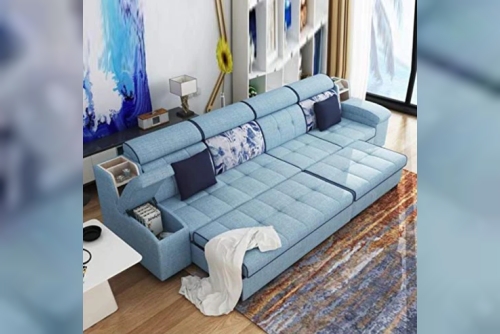Introduction
CW Glands, also known as cable wire glands, are essential components in various electrical installations, particularly for securing armoured cables. Designed to provide robust mechanical and environmental protection, CW glands are commonly used in industrial settings where durability and safety are of utmost importance. These glands are highly effective in ensuring that cables are not only securely fastened but also well-protected from external factors like dust, moisture, and mechanical stress.
In this post, we’ll explore CW glands in depth, covering their features, advantages, applications, and the materials used in their construction. We will also answer five frequently asked questions (FAQs) to help you gain a clearer understanding of these critical electrical components.
What Is a CW Gland?CW glands, often referred to as Cable Wire (CW) glands, are mechanical devices used to secure and terminate armoured electrical cables. They are specifically designed to be used with armoured cables, providing an effective seal and ensuring strain relief to the cable while maintaining the integrity of the armouring. CW glands are typically made from materials like brass or stainless steel, making them resistant to corrosion, heat, and mechanical stress.
The primary role of CW glands is to protect the entry point where a cable connects to equipment, such as junction boxes, enclosures, or industrial machinery. They ensure a tight, weatherproof seal, preventing dust, water, or chemicals from entering the enclosure while securing the cable in place.
Key Features of CW GlandsCW glands possess several features that make them indispensable in modern electrical installations. Some of the key features include:
1. Sealing
Capability
CW glands provide a reliable seal at the point where the cable enters the
enclosure or equipment. This prevents dust, dirt, moisture, and other
contaminants from entering, which is especially important in harsh environments
such as manufacturing plants, refineries, and outdoor installations.
2. Strain
Relief
These glands offer exceptional strain relief by securing the cable in place.
This prevents the cable from being pulled or moved, which could potentially
damage the cable or disrupt the electrical connection.
3. Corrosion
Resistance
CW glands are typically made from brass or stainless steel, both of which are
resistant to corrosion. This makes CW glands ideal for use in environments
where the presence of moisture or chemicals could lead to corrosion, such as
marine, industrial, and outdoor settings.
4. Versatility
CW glands are designed for use with a wide range of armoured cables, making them
suitable for various applications across industries. They can be used with SWA
(Steel Wire Armoured) cables, providing excellent protection and performance in
industrial electrical systems.
5. Mechanical
Protection
In addition to securing the cable, CW glands help maintain the mechanical
integrity of the armoured cable, ensuring that the armour remains intact and
provides the necessary protection from mechanical stress.
The most common material used in the manufacture of CW glands is brass, although stainless steel is also widely used for specific applications that require additional corrosion resistance. The choice of material depends on the specific requirements of the installation, such as environmental conditions, exposure to corrosive substances, and temperature fluctuations.
·
Brass CW Glands
Brass is the most popular material for CW glands due to its excellent
conductivity, corrosion resistance, and mechanical strength. Brass CW glands
are often used in general industrial applications where exposure to moisture or
chemicals is minimal to moderate.
·
Stainless Steel CW Glands
For environments where corrosion is a significant concern, such as marine and
offshore installations, stainless steel CW glands are preferred. Stainless
steel offers enhanced resistance to corrosive elements, ensuring the long-term
durability of the installation.
·
Nickel-Plated Brass Glands
In some cases, CW glands are manufactured using nickel-plated brass to provide
an extra layer of corrosion resistance while retaining the mechanical
properties of brass. This makes them suitable for harsher industrial
environments.
CW glands are used in a wide range of industries and applications due to their versatility, durability, and reliability. Some of the key applications of CW glands include:
1. Industrial
Installations
CW glands are commonly used in industrial plants and factories to secure
armoured cables that supply power to heavy machinery, motors, and control
systems. These glands provide the necessary strain relief and environmental
protection to ensure the safe and reliable operation of electrical systems in
harsh industrial environments.
2. Marine
and Offshore Applications
In marine and offshore installations, CW glands are used to secure cables in
environments where they are exposed to saltwater, high humidity, and corrosive
substances. The corrosion resistance of brass and stainless steel CW glands
makes them ideal for use in ships, offshore oil platforms, and other marine
settings.
3. Power
Distribution Systems
CW glands are often used in high-voltage power distribution systems to secure
armoured cables that transmit electricity from power stations to substations
and industrial facilities. Their ability to provide mechanical protection and
strain relief is crucial in maintaining the integrity of these systems.
4. Construction
Projects
In construction projects, CW glands are used to secure armoured cables that
supply power to electrical systems in buildings, bridges, and infrastructure
projects. They provide protection against environmental factors and mechanical
stress, ensuring the safety and longevity of the installation.
5. Hazardous
Environments
In industries such as oil and gas, mining, and chemical processing, CW glands
are used to secure cables in hazardous environments where explosive gases,
vapors, or dust are present. These glands ensure that electrical connections
remain secure and protected from external factors that could compromise safety.
CW glands are critical for ensuring the safety, reliability, and performance of electrical systems. By providing strain relief and environmental protection, these glands help prevent damage to cables and maintain the integrity of electrical connections.
In industrial and hazardous environments, CW glands also play a key role in protecting electrical systems from external factors such as dust, moisture, chemicals, and mechanical stress. This not only extends the lifespan of the electrical system but also ensures compliance with safety regulations and standards.
How to Select the Right CW GlandWhen selecting a CW gland for a specific application, several factors need to be considered:
1. Cable
Type
Ensure that the CW gland is compatible with the type of armoured cable being
used. Most CW glands are designed for use with SWA (Steel Wire Armoured)
cables, but it’s essential to verify compatibility with the specific cable
type.
2. Environmental
Conditions
Consider the environment in which the gland will be installed. For example, in
corrosive environments such as marine or chemical processing plants, stainless
steel or nickel-plated brass CW glands may be required.
3. Size
and Fit
Ensure that the gland is the correct size for the cable being used. CW glands
are available in a range of sizes to accommodate different cable diameters.
4. Sealing
Requirements
Consider the sealing capability of the gland, especially if the installation is
in an environment where dust, moisture, or chemicals could pose a risk to the
electrical system.
1. What is the purpose of a CW gland in electrical installations?
A CW gland is used to secure and terminate armoured cables, providing strain
relief and environmental protection. It ensures that the cable remains securely
fastened and protected from dust, moisture, and mechanical stress.
2. What materials are CW glands made from?
CW glands are typically made from brass, stainless steel, or nickel-plated
brass. The choice of material depends on the specific requirements of the
installation, such as environmental conditions and exposure to corrosive
substances.
3. Where are CW glands commonly used?
CW glands are commonly used in industrial plants, power distribution systems,
marine installations, construction projects, and hazardous environments such as
oil and gas facilities.
4. How do I choose the right CW gland for my application?
When selecting a CW gland, consider the type of armoured cable being used, the
environmental conditions, the size of the cable, and the sealing requirements.
Stainless steel or nickel-plated brass CW glands may be needed for corrosive
environments.
5. Can CW glands be used in hazardous environments?
Yes, CW glands are often used in hazardous environments such as chemical
plants, oil refineries, and mines. They provide secure and protected electrical
connections, ensuring safety in environments with explosive gases, vapors, or
dust.
In conclusion, CW glands are vital components in ensuring the secure and reliable operation of armoured cables in a wide range of industries and applications. From industrial plants to marine installations, CW glands offer the necessary mechanical and environmental protection to maintain the integrity of electrical systems in even the harshest conditions.












